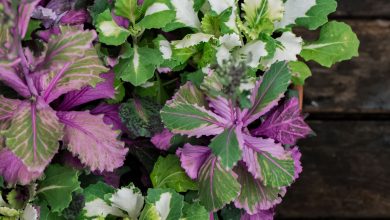Planting Carnations: [Needs, Substrate, Irrigation and Cultivation]
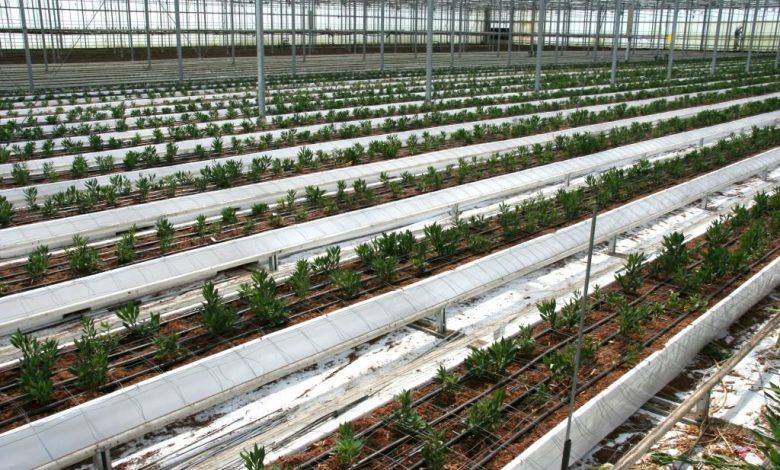
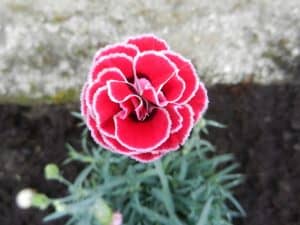 Dianthus chinensis is the scientific name of the Clavelina, anothervery resistant floral and ornamental plant, family of the carnations, which can even survive cold seasonal periods, although it will always prefer to live in a temperate climate.
Dianthus chinensis is the scientific name of the Clavelina, anothervery resistant floral and ornamental plant, family of the carnations, which can even survive cold seasonal periods, although it will always prefer to live in a temperate climate.
Even the seed germinates at temperatures ranging from 16° to 20°C.
It comes from Asia. It is easily obtained in China, Korea, the entire southeast of that continent, Russia and part of Europe, where it grows in the Mediterranean area.
The best known varieties are Dianthus deltoides, Dianthus chilensis and Dianthus barbatus.
Its stems are peculiarly erect, thin and its also thin leaves take on grayish green tones. They do not exceed more than 3 to 4 cm long by 5 mm wide.
Between spring and summer, it produces flowers in white, red and unicolored fuchsia tones, or intermingled in its petals and as they are small, the Clavelina is ideal to keep it always alive in pots. Although it is also fair to say that it also does very well in gardens due to its good predisposition to withstand sunlight.
What do you need? Little, very little. Let’s see it next
Temperature: Where to plant Clavelina?
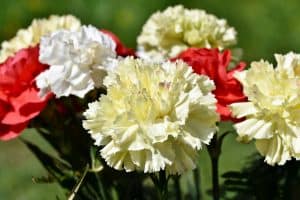 As we have already said, this beautiful plant adapts perfectly well to temperate climates. It demands, yes, a lot of sun and water to always stay radiant and colourful.
As we have already said, this beautiful plant adapts perfectly well to temperate climates. It demands, yes, a lot of sun and water to always stay radiant and colourful.
Even the seed germinates in temperatures ranging from 16° to 20°C.
Light: What needs do you have?
To live happily and flourish, carnations require plenty of direct sunlight and therefore constant hydration.
It is ideal to grow it in a pot, but at home you must find a very sunny place if you do not want to astonish its growth and flowering process.
Substrate and Fertilizer: How do we prepare the land?
It is convenient to cultivate its seeds in a light substrate composed in equal parts by the following components: black soil, humus and sand.
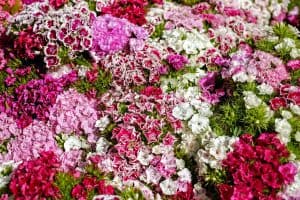 This recipe is ideal for them to flourish in about two weeks, always preferably at the beginning of the spring season to germinate, it is convenient to sow the carnation in early spring and it will bloom until the end of summer.
This recipe is ideal for them to flourish in about two weeks, always preferably at the beginning of the spring season to germinate, it is convenient to sow the carnation in early spring and it will bloom until the end of summer.
And in a pot, the ideal is to add a portion of peat to the soil, then a layer of leca is placed on top of the drainage hole. Here it is also essential that the soil is always moist.
Pruning: How can we do the carnation?
Pruning is easy.
We must eliminate the dry stems and the withered flowers. We can use pruning shears or even do it with our own hands.
It is advisable to thin out at the beginning of autumn and winter, in this way it will flower and grow more strongly during the spring.
Irrigation: How often and how?
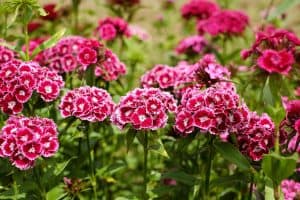 In the hottest months it is important that the carnation does not lack water. For this reason, we will water daily, about 15-30 minutes depending on how hot it has been.
In the hottest months it is important that the carnation does not lack water. For this reason, we will water daily, about 15-30 minutes depending on how hot it has been.
The rest of the year the irrigation can be spaced out a lot, taking into account the rains. If the rains are scarce, we will water at least once a week.
We recommend applying drip irrigation. However, if this system is not available, we can also irrigate with a watering can. We will try as always not to flood the soil excessively, keep it moist.
What pests and diseases affect you?
aphids
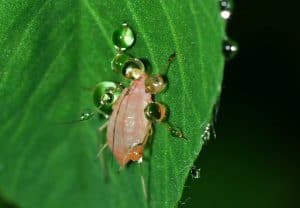 Aphids are tiny bugs, about 0.5 cm long . They are green, brown or yellow.
Aphids are tiny bugs, about 0.5 cm long . They are green, brown or yellow.
We can remove them using neem oil or potassium soap.
Mealybugs
Quite common in this type of crops. They are cottony and are deposited on the leaves. An effective remedy is usually sulfur compounds and severe pruning.
To learn more, you can see: Carnation cuttings.

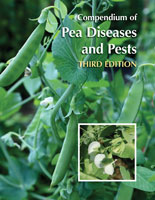
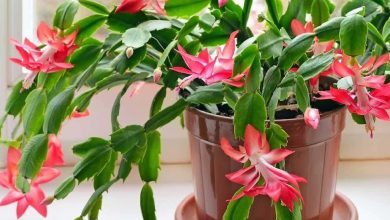
![Photo of Jericho Flower: [Cultivation, Care, Pests and Diseases]](https://www.complete-gardening.com/wp-content/uploads/2022/08/jericho-flower-cultivation-care-pests-and-diseases-390x220.jpg)
